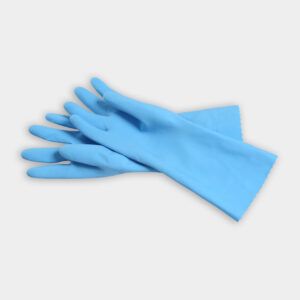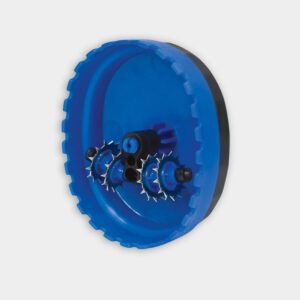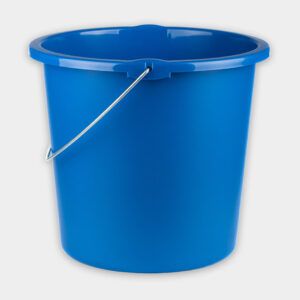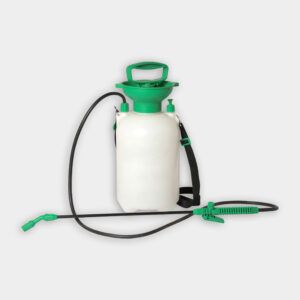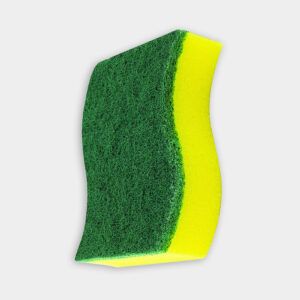Project details
Skill
Cost
Estimated Time
Depending on how your wallpaper was attached, it can be a pain to remove—but with the right tools and techniques, you can get it done. This guide will walk you through the process, from scoring the wallpaper to cleaning the walls for your next project. In the video above, This Old House painter Jim Clark explains an effective method for removing stubborn wallpaper using specialized tools and solutions.
Tools and Materials to Remove Wallpaper
Angi estimates it will cost between $65 and $100 to remove wallpaper yourself, depending on the tools you rent or buy. To remove wallpaper, you’ll need the following items:
- 3-gallon bucket
- Drop cloths
- Painter’s tape
- Plastic sheeting
- Pump sprayer
- Rubber gloves
- Scouring sponge
- Wallpaper removing fabric
- Wallpaper scoring tool
- Wallpaper stripper solution
Preparing Your Workspace for Wallpaper Removal
To protect your floors and furniture during the wallpaper removal process, remove all furniture from the room or move it to the center and cover it with plastic sheeting. Cover the floor with drop cloths to catch any drips or debris, and apply painter’s tape to protect baseboards, window frames, and door frames. Turn off the electricity to the room, and cover electrical outlets with plastic sheeting and tape.
Scoring the Wallpaper
The first step is to score your wallpaper so that the stripping solution penetrates it. A wallpaper scoring tool is designed specifically for this task. Clark says it’s important to let the tool do the work. The rotating head with sharp spikes will create small perforations in the wallpaper. Here’s how to use it:
- Hold the tool against the wall with light pressure.
- Move the tool in overlapping circular motions across the entire wallpapered surface.
- Pay extra attention to edges and corners, ensuring you score all areas thoroughly.
Applying the Wallpaper Stripping Solution
Once the wallpaper is scored, apply the stripping solution to loosen the adhesive. To prepare the stripping solution, fill a 3-gallon bucket with warm water. Add about 2 ounces of wallpaper stripper solution per two gallons of water and mix the solution thoroughly. Here’s how to apply this solution to your wallpaper:
- Soak sheets of the fabric in the stripping solution.
- Wring out excess solution to prevent dripping.
- Apply the wet fabric to the wall, smoothing it out with your hands.
- Continue applying sheets until the entire wall is covered.
- Continuously spray the fabric-covered walls with stripping solution.
- Allow the solution to work for about 20 minutes.
Removing the Wallpaper
After the stripping solution has had time to work, you can begin removing the wallpaper. Start at a corner or seam and carefully peel back the wallpaper. Pull slowly and steadily to remove large strips at a time. If the paper resists, apply more stripping solution and wait a few minutes before trying again.
For areas where the wallpaper doesn’t come off easily, reapply the wet fabric or spray more solution directly onto the stubborn spots and wait an additional 10–15 minutes. Use a putty knife to gently scrape off the remaining wallpaper, being careful not to damage the wall underneath.
Cleaning the Walls
After removing your wallpaper, your walls may have sticky residue left over. To remove any remaining adhesive, mix a small amount of wallpaper stripper solution with warm water. Use a scouring sponge dipped in the solution to scrub the walls gently. Rinse the walls with clean water to remove any leftover solution or residue.
Tips for Successful Wallpaper Removal
To make your wallpaper removal project go smoothly, work in sections to manage the process. Test the stripping solution on a small, inconspicuous area first to ensure it doesn’t damage the wall. For textured or vinyl wallpapers, you may need to strip off the top layer before applying the solution. Keep windows open for ventilation while using stripping solutions.
Tackling Remaining Wallpaper Challenges
You might encounter difficulties during your wallpaper removal project. Here are some common issues and how to address them.
- Delicate wall surfaces: If your walls are older or more delicate, be gentle with scoring and scraping to avoid damage.
- Old or stubborn adhesives: Some older adhesives may require a stronger stripping solution. Check the product instructions to determine if a stronger mix is possible.
- Thick or multiple layers of wallpaper: For thicker wallpapers or multiple layers, apply more scoring so the stripping solution reaches the base layer.
Advanced Wallpaper Removal Techniques and Tools
If you have particularly challenging wallpaper or want to speed up the process, consider these advanced techniques and tools:
- All-in-one kits: Many stores offer wallpaper removal kits that include all the necessary tools and solutions, saving you the hassle of purchasing items individually.
- Electric scoring tools: These tools can make the scoring process faster and more efficient, allowing for better penetration of the stripping solution.
- Steamers: Wallpaper steamers can be rented from hardware stores and use steam to loosen tough adhesives quickly.
Final Steps for Wall Preparation
After removing the wallpaper and cleaning your walls, prepare them for paint or new wallpaper. Taking extra steps now will save you time and effort later.
When removing wallpaper from bathrooms or kitchens, inspect the walls for signs of mold or mildew. Clean any mold or mildew with a mixture of water and bleach. Make sure the area is well-ventilated during cleaning.
Before painting or applying new wallpaper, allow the walls to dry completely for at least 24 hours. Inspect the walls for any damage and repair as necessary. You can sand any rough spots to achieve a smooth surface.
